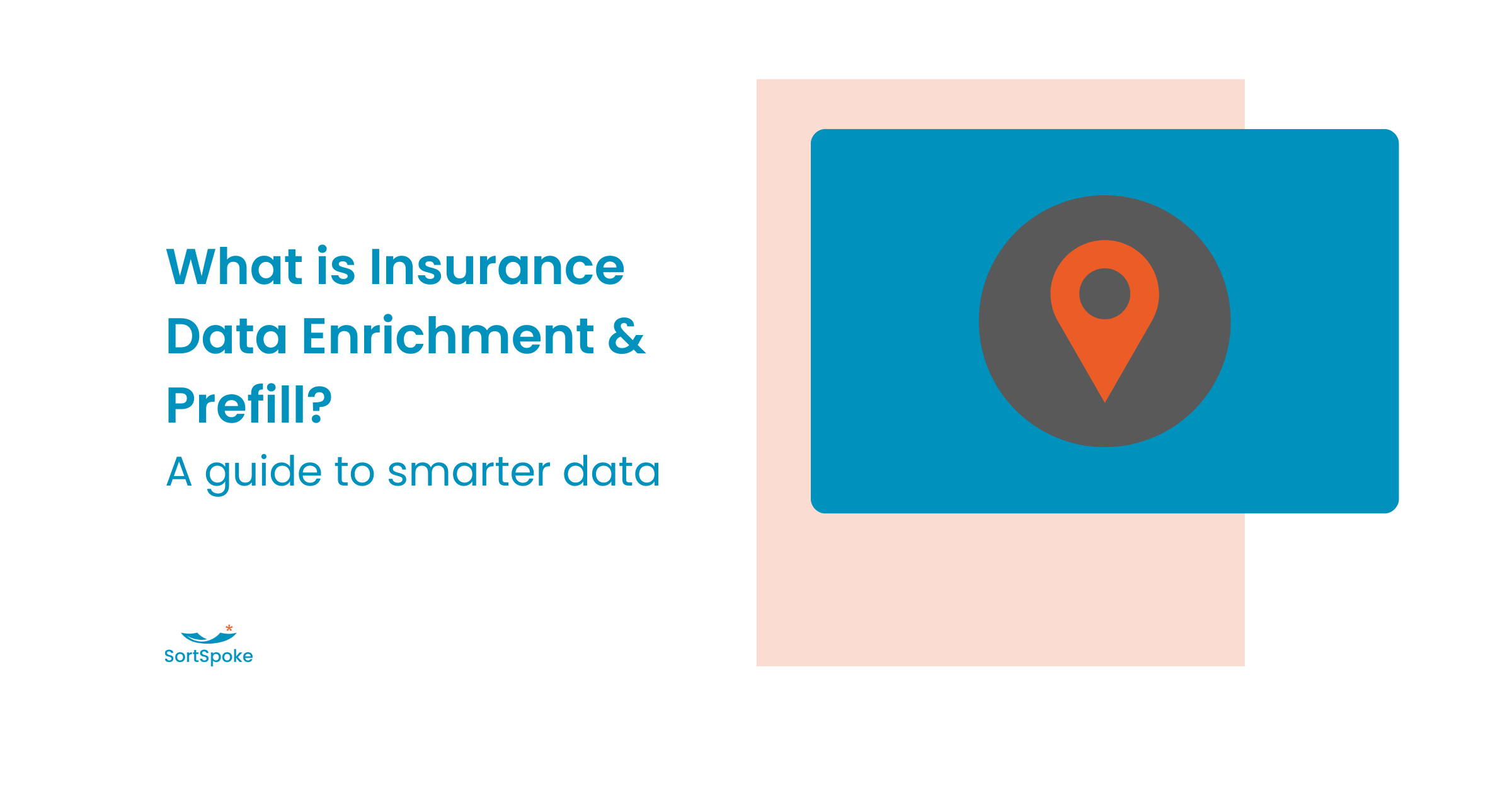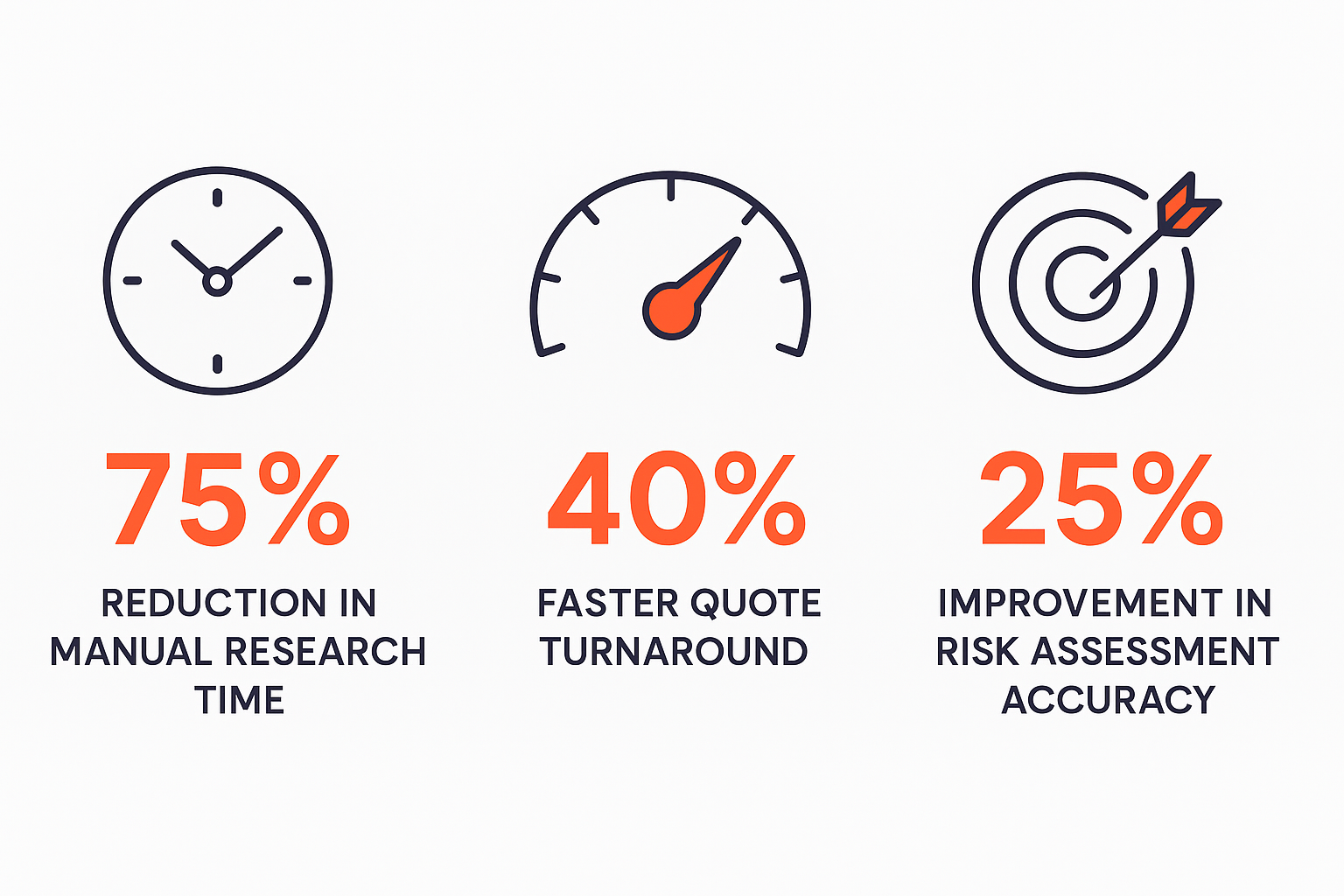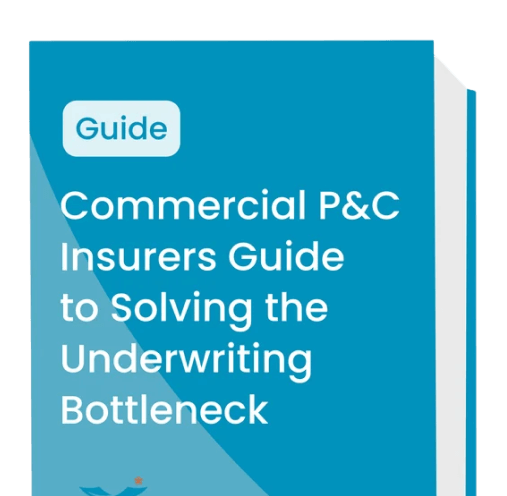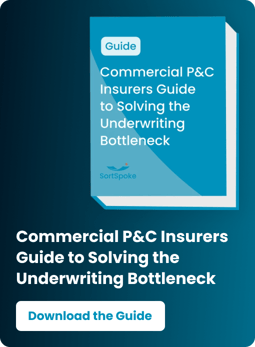
What Is Insurance Data Enrichment and Prefill? A Guide to Smarter Data
DEFINITION:
WHAT IS INSURANCE DATA ENRICHMENT AND PREFILL?
Data enrichment is the process of enhancing basic or unstructured submission data by automatically merging it with verified external sources—demographics, geospatial risk data, financial signals, behavioral patterns, and firmographic details.
The enrichment process follows a clear workflow: cleanse → structure → merge → enrich, transforming raw data into actionable underwriting intelligence..
TL;DR
- Data enrichment enhances submission data by merging it with external sources (demographics, property details, risk factors)
- Data prefill auto-populates form fields using enriched data, reducing manual entry by up to 80%
- Combined approach dramatically reduces application abandonment while improving data accuracy and compliance
- Human-in-the-loop validation ensures enriched data meets underwriting standards before processing
- SortSpoke integrates both capabilities seamlessly into existing workflows with minimal IT involvement
- Measurable impact: 5X faster processing, 90% reduction in data errors, 40% improvement in quote completion rates
Imagine walking into your favorite coffee shop where the barista already knows your order, has your payment method ready, and can suggest modifications based on your preferences. That's the power of data enrichment and prefill in insurance—transforming the traditionally clunky application process into a seamless experience.
While customer expectations have evolved to expect this level of personalization and efficiency, most insurance applications still require tedious manual data entry, leading to abandoned quotes and frustrated prospects.
This guide explores how data enrichment and prefill technologies are revolutionizing insurance workflows, and why the combination of AI-powered automation with human validation creates the optimal balance of speed and accuracy.
Defining Data Enrichment and Prefill
What Is Data Enrichment?
Data enrichment is the process of enhancing basic or unstructured submission data by automatically merging it with verified external sources—demographics, geospatial risk data, financial signals, behavioral patterns, and firmographic details. The enrichment process follows a clear workflow: cleanse → structure → merge → enrich, transforming raw data into actionable underwriting intelligence.
Key Enrichment Sources Include:
- Public records: Property characteristics, ownership history, legal filings
- Financial data vendors: Credit scores, financial stability indicators, payment history
- Geospatial providers: Flood zones, crime statistics, proximity to fire stations
- Industry databases: CLUE reports, claims history, risk scores
- Specialized data vendors: Real-time property/auto data, commercial insights, identity verification
What Is Data Prefill?
Data prefill is the automatic population of form fields using enriched data and previously submitted information. Instead of asking prospects to manually enter their name, address, property details, and coverage history, the system intelligently populates these fields based on minimal initial inputs.
Key Benefits Overview:
- Speed: Reduce form completion time from 15+ minutes to under 3 minutes
- Accuracy: Eliminate 90% of manual data entry errors
- Conversion: Improve application completion rates by 40-60%
- Fraud Detection: Cross-source validation reveals inconsistencies and potential fraud
- Compliance: Ensure data consistency across regulatory requirements
The Technology Behind Smart Data Processing
How the Process Works
- Minimal Input Collection: Prospect provides basic identifiers (VIN, company name, property address)
- API Integration: System queries multiple data sources (Fenris, Veridion, LexisNexis, Verisk) simultaneously
- Data Verification: Cross-reference multiple sources to validate accuracy and completeness
- Intelligent Population: Auto-fill relevant form fields while flagging uncertainties for human review
The AI + Human Validation Approach
Modern enrichment platforms use machine learning to identify the most reliable data sources and flag potential discrepancies. However, the best systems maintain human-in-the-loop validation, allowing underwriters to review, refine, and approve enriched data before processing—ensuring both speed and accuracy.
Technical Considerations
- Real-time Processing: Sub-second response times for most data queries
- Privacy Compliance: GDPR, CCPA, and industry-specific regulatory adherence
- Integration Flexibility: RESTful APIs that work with existing policy management systems
- Scalability: Handle thousands of concurrent enrichment requests
Common Enrichment Use Cases by Insurance Line
Auto Insurance
VIN Decoding: Automatically populate year, make, model, trim level, safety features, and ADAS capabilities from VIN input alone. This eliminates manual lookups and ensures accurate vehicle valuation and risk assessment.
Property Insurance
Geospatial Risk Assessment: Address input triggers automatic population of flood zones, wildfire risk, earthquake exposure, crime statistics, and proximity to emergency services. Property characteristics like square footage, build year, and construction materials are automatically verified.
Life & Health Insurance
Identity and Health Insights: Name, address, and DOB inputs can trigger prescription data checks, credit history verification, and identity validation—streamlining underwriting while maintaining privacy compliance.
Commercial Insurance
Business Intelligence: Company name and address automatically populate NAICS/SIC codes, employee counts, financial ratings, industry risk factors, and business entity verification from commercial data vendors and business intelligence providers.
How Companies Do Enrichment Today—And Where They Fall Short
✅ Common Approaches (But With Limitations)
Building It In-House: Many carriers create their own data enrichment systems, pulling information from multiple external sources. While this gives them control, these homegrown systems require constant maintenance as data providers change their formats and pricing—often consuming more IT resources than expected.
Overnight Data Updates: Some carriers run enrichment processes after hours, updating customer and prospect information in batches. The problem? By the time an underwriter needs the data for a quote the next day, market conditions or customer details may have already changed.
Central Data Management Systems: Carriers often invest in large, centralized systems designed to clean and organize all their data in one place. While these provide consistency, they're typically inflexible and expensive to modify when business needs change or new data sources become available.
❌ Why These Approaches Miss the Mark
- Timing Problems: Data enrichment happens too late in the process—after the customer has already started filling out forms or submitted documents, rather than helping them in real-time
- All-or-Nothing Automation: Systems either process everything automatically (missing important nuances) or require manual review of every single data point (defeating the purpose of automation)
- System Complexity: Multiple disconnected tools and databases create confusion for underwriters who need to check several different systems to get a complete picture
- Stale Information: Data that's hours or days old can lead to incorrect quotes, frustrated customers, and lost business
The Result: Many carriers find their enrichment initiatives deliver less value than promised, with underwriters still spending significant time on manual data gathering and verification.

What Modern Enrichment Should Look Like
The Right Way to Do Enrichment
Modern enrichment programs should deliver data when and where underwriters need it most. This means:
- Real-time processing that happens as customers fill out forms or submit documents, not hours later
- Instant connections to data vendors through modern web-based integrations that stay current automatically
- Smart human oversight where experienced underwriters validate key decisions while routine data gathering happens automatically
- Easy data vendor management with simple connections to specialized providers without complex IT projects
- Clear data tracking so underwriters and auditors can see exactly where information came from
Why the Right Architecture Matters
The difference between successful and failed enrichment initiatives often comes down to when and how data gets processed. Systems that can respond instantly to user inputs create competitive advantages, while older approaches that process data in batches overnight create bottlenecks that frustrated customers and limit business growth.
Real-World Applications in Insurance
Challenge: MGAs spending 45+ minutes manually researching and inputting data for each commercial submission.
Solution: Implement enrichment workflow that automatically pulls:
- Company financials and risk ratings
- Property characteristics and hazard exposure
- Industry-specific risk factors
- Historical claims patterns

Why This Matters for Underwriting Teams
Operational Efficiency Without Compromise
Data enrichment and prefill don't replace underwriter expertise—they enhance it. By eliminating routine data gathering and entry tasks, underwriters can focus on risk analysis, relationship building, and complex decision-making where human judgment is irreplaceable.
Competitive Advantage in Digital Transformation
Carriers using enrichment and prefill report significant competitive advantages:
- Faster Quote Delivery: Beat competitors to market with same-day quotes
- Improved Customer Experience: Reduce friction in the buying process
- Operational Scalability: Handle 5X more submissions with existing staff
- Data Quality: Consistent, verified information reduces downstream errors
Addressing Common Concerns
- "Will this replace underwriters?" No—it amplifies their capabilities and allows focus on high-value activities
- "How do we ensure data accuracy?" Human validation and multiple source verification maintain quality standards
- "What about integration complexity?" Modern platforms require minimal IT involvement with RESTful APIs and pre-built connectors
How SortSpoke Elevates the Enrichment Standard
Beyond Traditional Enrichment Platforms
SortSpoke bridges the gap between document extraction, data enrichment, and intelligent prefill in a single, integrated platform. Unlike point solutions that handle only one piece of the workflow, SortSpoke orchestrates the entire process:
- AI-Powered Extraction: Intelligently pulls data from complex, unstructured submissions
- Real-Time Enrichment: Enhances extracted data through specialized data vendor APIs during document processing
- Smart Prefill: Populates ACORD forms and internal systems instantly with validated data
- Human-in-the-Loop Validation: Underwriters review and refine results before final processing, ensuring accuracy and compliance
The SortSpoke Advantage
Event-Driven Architecture: Unlike legacy batch systems, SortSpoke processes and enriches data in real-time as documents are submitted, enabling faster quote generation and improved conversion rates.
API-First Design: Easily expand to new data sources and integrate with existing systems without heavy IT involvement. SortSpoke's modern architecture eliminates the technical debt that plagues traditional enrichment solutions.
Measurable Impact: SortSpoke customers report:
- 80% reduction in manual data handling time
- 5X increase in submission processing capacity
- 95% accuracy in extracted and enriched data
- 3-day implementation with existing tech stacks
- Real-time processing that enables same-day quoting
Why It Works: SortSpoke's human-in-the-loop approach ensures AI enhances rather than replaces underwriter expertise, providing explainable results that meet regulatory and audit requirements while delivering the speed and accuracy modern insurance operations demand.
Implementation Best Practices
Getting Started Successfully
- Start with high-volume, routine submissions to demonstrate immediate value
- Maintain human oversight during initial rollout to build confidence
- Measure key metrics (processing time, accuracy rates, user satisfaction) to track ROI
- Train teams gradually on validation workflows and exception handling
Integration Considerations
Modern enrichment and prefill platforms integrate with minimal IT involvement, but successful implementations focus on change management and user adoption rather than technical complexity.
The question isn't whether to implement modern enrichment and prefill capabilities, but how quickly you can deploy them to stay competitive in an increasingly digital marketplace.








